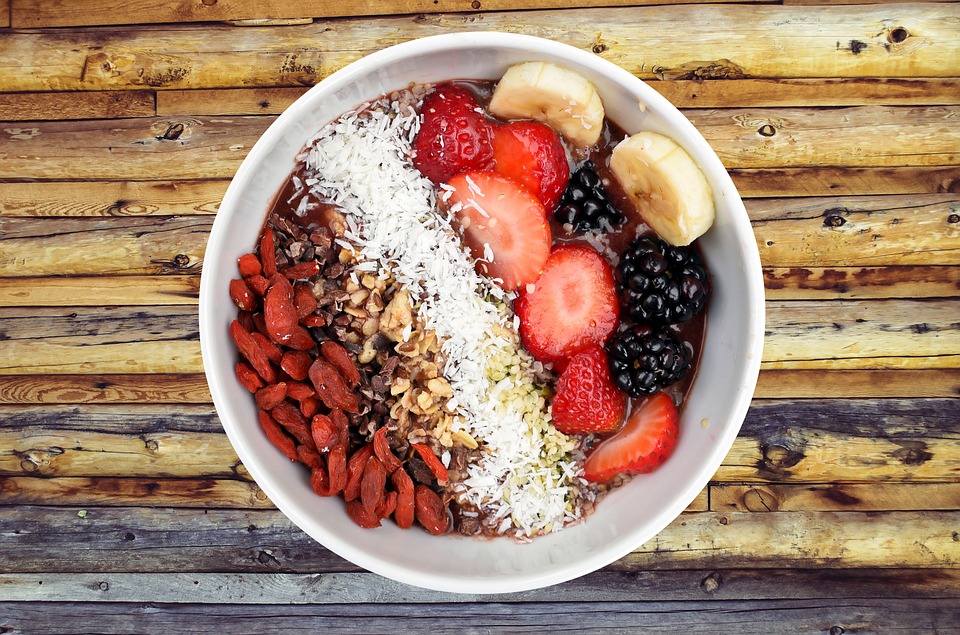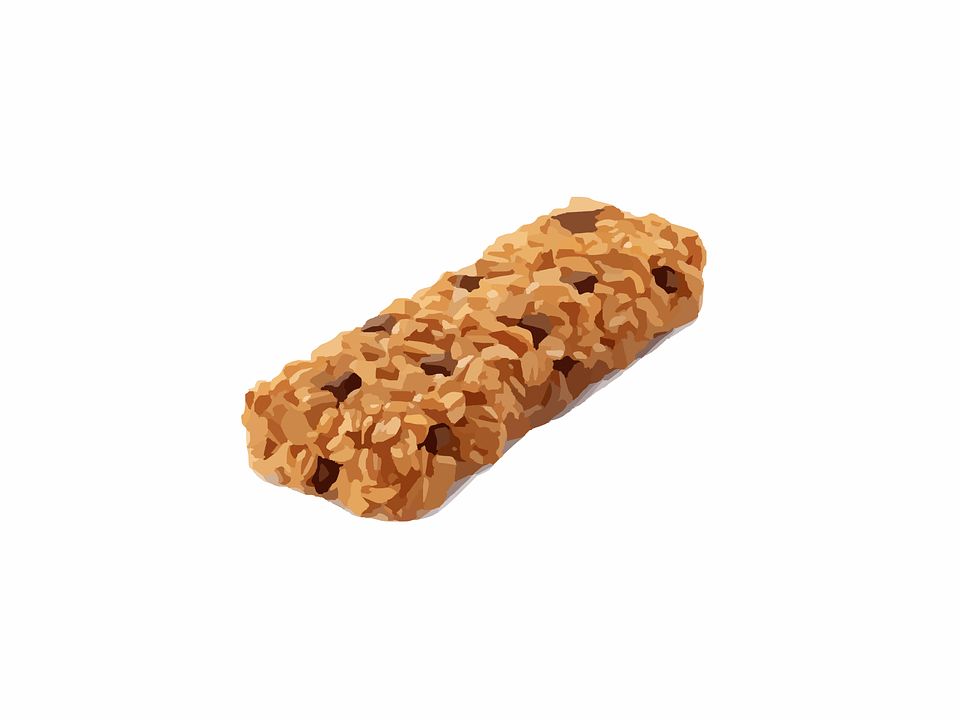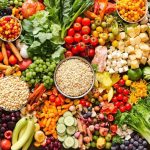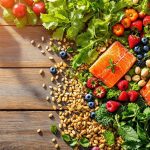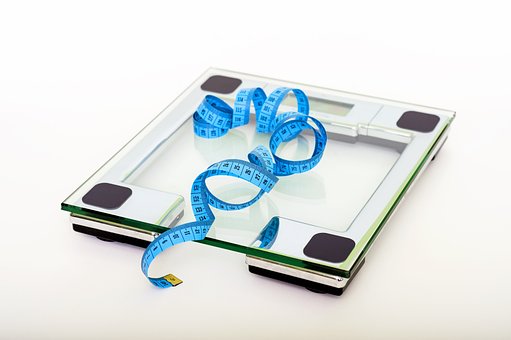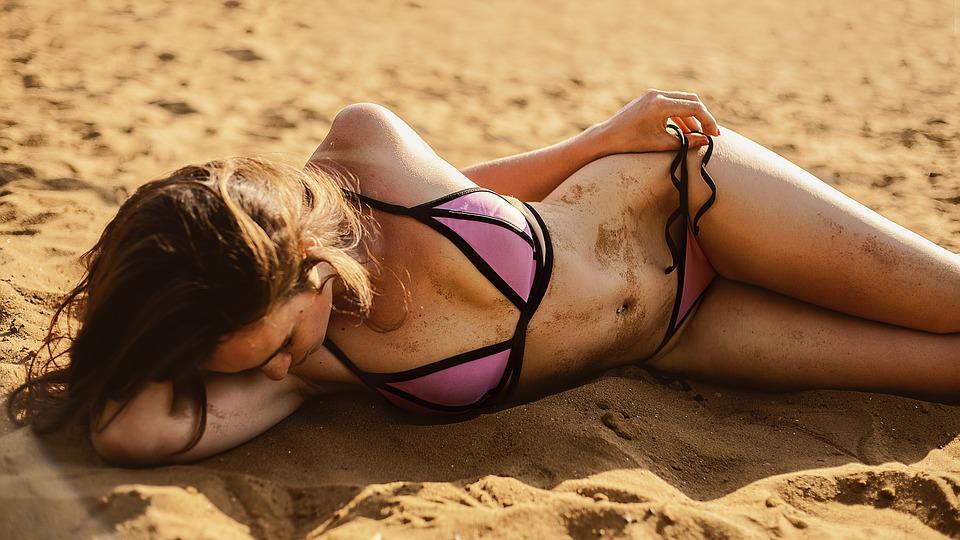
Pre-competition meal plans are designed to help an individual lose fat without compromising lean muscle. The subtleties between meal plans depend to a certain extent on the division in which the client chooses to compete. Understanding the differences can help you better prepare your client for a winning experience!
The 12-Week “Cutting” Process
At 12 weeks out from a competition, the client begins to count calories and track macronutrient grams. They also eliminate processed foods, “junk foods” that are high in calories but have no nutritional value, and simple sugars from their diet (a limited amount of fruit sugars is acceptable).
A person who eats three square meals a day should ease into the habit of eating six small meals per day, each containing quality sources of lean protein, fats, and carbohydrates. It is also important to drink a lot of water, about a gallon a day. According to the Ultimate Bodybuilding Guide, a serious weightlifter can lose one pound of muscle for every three pounds of body fat. Having enough time to diet can lessen muscle loss by preventing the competitor from crash dieting in an effort to lose a lot of body fat.
Vella and Kravitz state that women have lower metabolic rates than men, meaning they have to intake fewer calories to notsacrifice hard-earned muscle. They recommend that women transitioning to a contest prep diet drop 500-750 calories from their regular diet.
If you’re not losing fat at a consistent rate, you may need to reduce your calorie intake even further. On the other hand, if you’re losing weight along with muscle mass and strength, that’s a sign you should slightly increase your calorie intake.
The amount of protein an athlete can consume daily varies depending on their sport. Figure athletes can consume around 1 gram of protein per pound of body weight daily, whereas most Bodybuilder and Physique competitors aim for 1.2-1.4 grams. Mitchell also recommends cutting down on starchy carbs and eating more eggs and red meat, saving the majority of carbs for immediate post-workout.
Young women have about 25-30% body fat, while older women have about 30-35% body fat.
It is very difficult to achieve the extremely low body fat levels of a figure model or bodybuilder because it goes against millions of years of evolution. The high volume of training required to reach these levels, coupled with the low quantities of food needed to sustain it, is very stressful. Therefore, it is essential that personal trainers or coaches who manage these clients have a comfortable understanding of how to correctly manage a negative energy balance.
The Fat Loss Game
You should always start by slowly and gradually changing the client’s diet before increasing their cardio. When you first start increasing cardio, add 5-15 minutes to each session for the first week. Once the sessions reach 45-60 minutes in length, add another weekly session if needed. Cardio should only be increased if the client either stops losing fat for at least 2 weeks without changing anything else in their program, or if they have dropped calories by 100-200 consistently for 1-2 weeks and still have not seen a reduction in % body fat.
The Role of Macronutrients
Protein helps preserve muscle when the body is in a hypocaloric state. Starting at about four weeks from competition day, many Bodybuilder competitors increase their protein intake by 40% to 1.4 grams per lb. of body weight, while keeping 20-30grams of fat in the diet.
The idea behind this strategy is to replenish glycogen stores on training days, which will help to improve performance, and then allow the body to burn through those stores on days when you are not working out There are many ways to cycle carbohydrates. The easiest way to maintain efficiency and not experience too much deprivation is the carb structuring + cycling format. This dictates that daily carbohydrate intake will be higher on some days and very restricted on others. The idea behind this strategy is to replenish glycogen stores on training days, which will help to improve performance, and then allow the body to burn through those stores on days when you are not working out.
This cycle, which is only meant to be done for a short time, can help prevent weight loss from slowing down. It can be helpful mentally to know that there are days built into the meal plan where you don’t have to worry about watching what you eat as closely. This will help you preserve muscle while quickly losing body fat by taking advantage of insulin and preventing your body from going into a state where it starts to store fat. Your workouts will also stay effective without you losing much strength.
Refeeding
A refeed is designed to increase your intake of carbs while simultaneously decreasing your dietary fat. The purpose of this is to give a boost to the actions of the hormone leptin, which is very effective in burning away fat stores.
You will need to suggest to your client how often she can have a large intake of calories and carbohydrates without stopping her fat loss. This will depend on her knowledge of her own body. If she says she is very sensitive to carbohydrates and gains fat easily, you should suggest she has the same number of grams of carbohydrates as protein. If she is a thin-framed athlete with a fast metabolism, she may be able to have more carbs. Remember to include all carbohydrate sources when you are counting the daily intake, including vegetables and fruit.
Attaining the % Body Fat Loss
A 110-pound female should aim for a loss of 0.55 – 1.1lbs of body fat per week to maximize muscle retention during contest prep.
Lowering the rate of weight loss to 0.5% of body weight per week may help minimize muscle loss during later stages of contest preparation, when the risk of muscle loss is higher. In studies of natural bodybuilders, those who averaged a rate of loss of 0.5% of bodyweight per week retained more muscle during contest preparation than those who aimed for a 0.7% or 1.0% weekly loss.
If you want to perform well in the gym and maintain muscle mass during contest prep, you should diet at a slower rate. This way you’ll be able to consume more calories and won’t have to crash down on your intake.
My Weight Loss Story Recap
Recently I have lost about 5lbs in the past year.
I decided to lose another ten pounds in 2017. I did this by monitoring what I ate and why I was eating.
But my body just wasn’t giving me the results that I wanted At the end of 2019, I was still frustrated because I didn’t feel like I had the physique that represented my healthy lifestyle. Even though I ate healthy food and exercised, my body wasn’t giving me the results that I wanted.
I told my husband that I would be willing to go through with liposuction if I couldn’t lose weight through other means within six months. I was determined to try my hardest to lose weight naturally before resorting to surgery.
I was experiencing a mid-life, empty nester crisis and wanted to set some goals that would be challenging and make life interesting, so I decided to enter my first bikini show! I finally decided to commit to calorie counting and it was successful!
I initially thought that doing a bikini show would be a fun goal to put on my bucket list. However, after doing it once, I vowed to never do it again.
After I did my second bikini show, I vowed to never do it again. I really hate getting up on stage in a bikini!
I did the same thing last Saturday as well! What’s wrong with me?
age is only a number The primary lesson I took away from the last 2 1/2 years is that age is nothing but a number.
- You can still get fit over 40 or 45 in my case,
- Your metabolism is NOT permanent and it’s not broken. It’s ALWAYS changing.
- And lastly, if you aren’t doing something that people think is crazy, you aren’t doing it right!
My Bikini Competition Prep Diet
I’m not really someone who switches up their diet much, if I’m being honest. For the past few years, I’ve been eating mostly the same things, regardless of whether I’m in prep mode or not. I allowed myself to be a bit more flexible with what I ate over the summer, but I’m just a creature of habit and I actually like the foods that are on my plan.
For my height and weight, I’ve been staying between 1400-1500 calories, 125 g carbs, 150 g protein, and 30 g fat. My meals consistently looked like this:
- Egg whites and oatmeal with fruit
- Chicken on a green salad or with a side of sweet potatoes
- Protein ice cream, shake, or protein bar
- Ground Turkey, rice, and veggies
A full day of eating examples
Below are some meals I have prepared over the past few months. They are not from consecutive days, I just labeled them that way. I usually eat the same thing for several days in a row before changing up one of the meals.
Day 1
I typically have egg whites, oatmeal with sugar-free syrup and cinnamon, and turkey bacon for breakfast.
This lunch consists of a salad with chicken, a hard-boiled egg, and Bolthouse ranch dressing.
Snack: Built Bar
Dinner: Ground turkey, rice, and veggies
Day 2
For breakfast, I had egg whites with Sargento cheese and thinly sliced oats with raspberries.
Frozen chicken tenders seasoned with Kernel Season’s cheddar seasoning, veggies, and a sweet potato with Feast Mode Cinnamon Honey Butter seasoning for lunch.
Snack: Protein ice cream made with CSE protein powder
Dinner: Ground turkey and veggies
Day 3
Breakfast: Eggs, thinly sliced cheese turkey bacon, grapefruit
Lunch: Chicken, sweet potato, summer squash
Snack/dessert: Protein ice cream
Dinner: Ground turkey, spaghetti squash, and green beans.
Day 4
Suggested breakfast: Eggs, cheese, oats, cinnamon, sugar-free syrup, banana
Lunch: Chicken, egg, veggies, and sweet potatoes
Snack: Protein bar
Dinner: Steak, broccoli, tomatoes
Day 5
Egg whites, turkey bacon, avocado, oats, and raspberries
This meal contains chicken, cauliflower rice, sweet potatoes, asparagus, and cheddar flavored Kernel Seasonings.
Snack: Protein ice cream with blueberries
Dinner: Healthy Noodle (low-calorie noodles), broccoli, ground turkey, and nutritional yeast. This meal is high in protein and fiber, and low in calories and fat. It is a great option for those who are trying to lose weight or maintain a healthy weight.
The little things
To “dial it in” means to be more careful and attentive. In this case, the author is saying that it’s hard for her to be attentive to how much she’s eating between meals, because she often grazes throughout the day.
I decided to give up Diet Coke three months ago because I knew I needed to if I wanted my waist to be smaller. In the last show, I couldn’t hold my abdominal muscles tight. I couldn’t even mentally connect to them! So, I stopped completely.
Eating sodium makes my weight fluctuate by several pounds. I didn’t realize how much water I was retaining, but I knew I was eating too much salt. The more vegetables I ate, the more salt I ate. But when I avoided salt, my weight was always several pounds lower the next day, and you could see the definition in my muscles again. So I saved that in my toolbox for the week of the show.
With a 1400-1500 calorie diet, I was almost able to reach my goal weight. This means that when I thought I was eating 1500 calories, I was actually eating a lot more.
The last few weeks before the show, I ate the same foods, but I cut my calories to 1200 and my carbs to 80-100 grams (except for long run days). And I kept looking leaner.
Peak Week
The speaker didn’t make many changes to their diet or routine in the week leading up to the show. They were already lean and eating clean, but they increased their carb intake slightly at the end of the week to try to increase muscle definition.
Wednesday I decided to eat more carbs. I had been eating a very low carbohydrate diet for the last few weeks, so on Wednesday I decided to eat more carbohydrates.
- Thursday, I increased it to 125 carbs (with rice, rice, cakes, sweet potato, oatmeal, and bananas)
- Friday I increased it to 175 carbs (with rice, sweet potato, and rice cakes)
- Saturday (show day) I increased it again to 200g carbs – But this time I used Salted Caramel Gu and Rice cakes. I knew both of those things took up very little space in my stomach, and I knew I could digest it well- no bloating! Also, I didn’t get on stage till almost 4 pm, so that’s pretty much a full day of eating before the stage. I didn’t want to screw it up.
I used salt sparingly and drank lots of water! 1 1/2 gallons per day, until show day, when I took only sips of water! I didn’t want to bloat again.
Final Thoughts
I think I looked better at the third show than the prior two shows. The competition was tough, again. There were more women over 40 than under, and my age group 45+ was the biggest!


